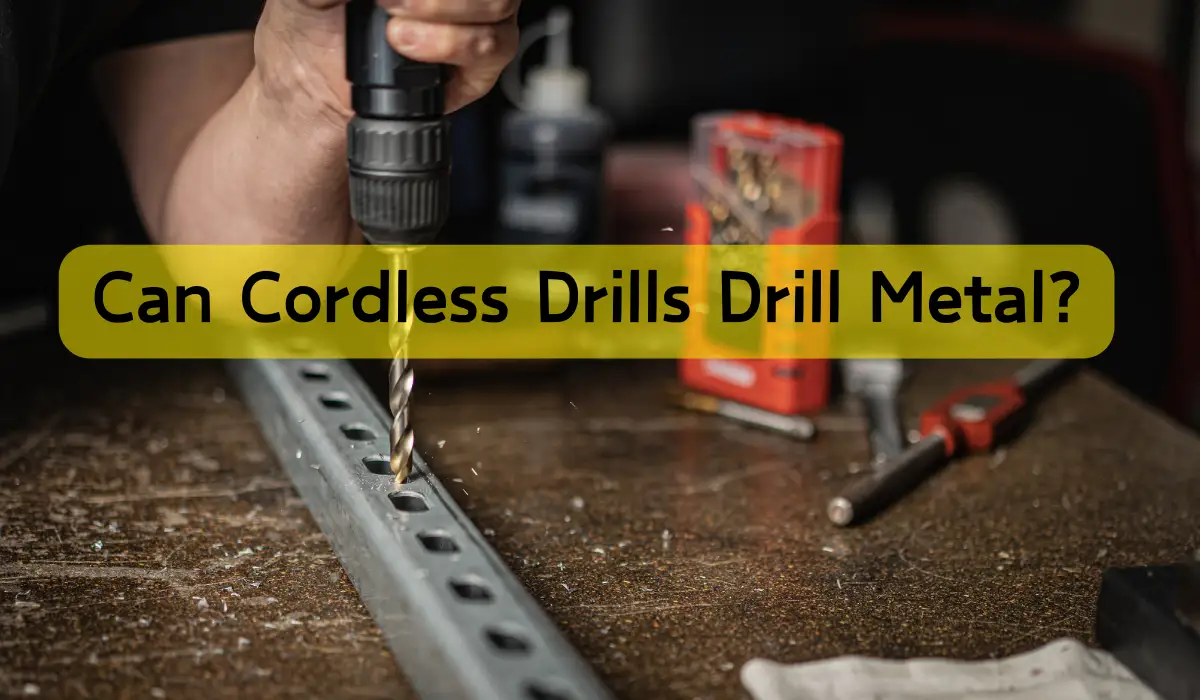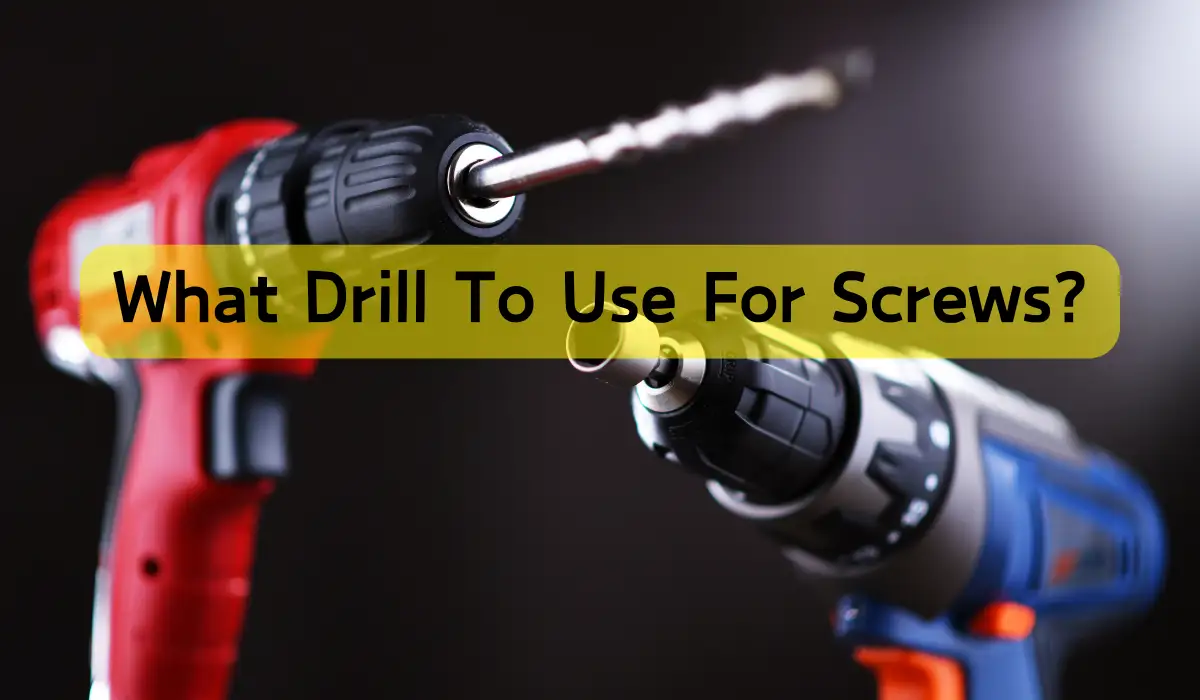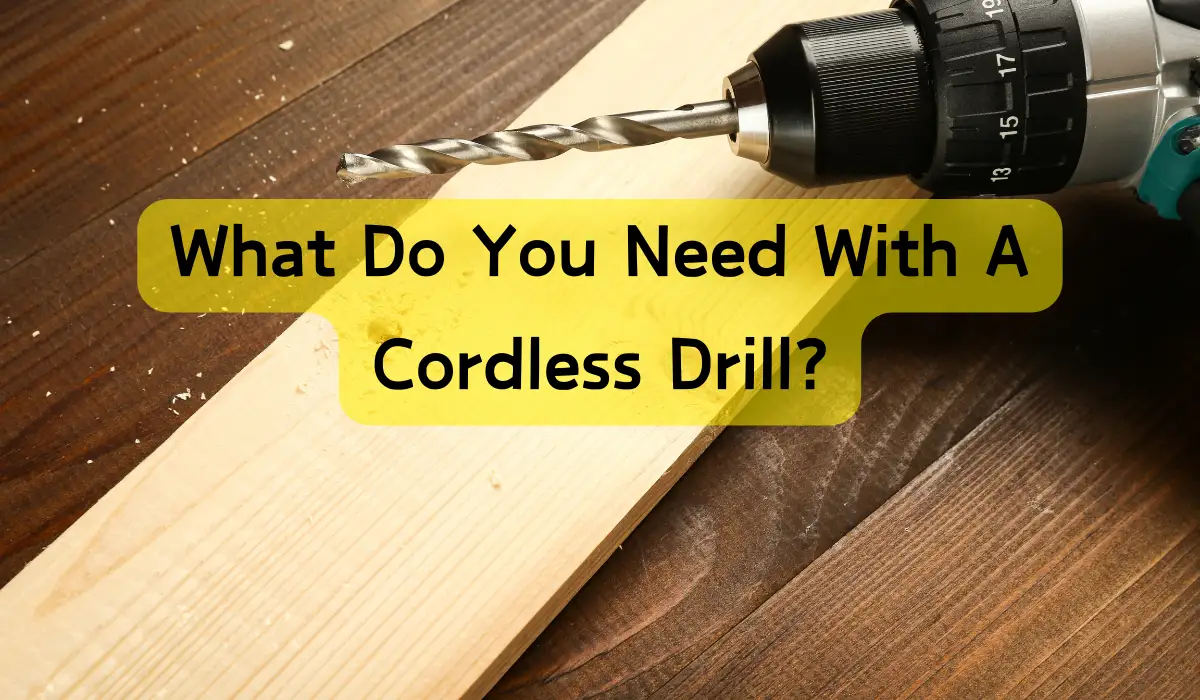You can drill through metal with a cordless drill, but it requires the right combination of power, speed, and torque, as well as the correct drill bit selection and understanding of metal thickness and drill ability. You’ll need a drill with sufficient power and speed to efficiently penetrate metal, and choosing the right drill bit – whether it’s high-speed steel, cobalt steel, or carbide-tipped – is vital. With the right tool and technique, you can tackle metal drilling tasks with confidence. Now, get ready to tap the full potential of your cordless drill and take on even the toughest metal drilling tasks.
Jump to
Key Takeaways
• Cordless drills can drill through metal, but the drill’s power, speed, and torque must be suitable for the metal’s thickness and type.
• The ideal drill setting involves choosing the right speed and torque combination, depending on the metal’s thickness and drill bit capabilities.
• A cordless drill’s battery type and capacity affect its runtime and overall performance, with lithium-ion batteries providing more power and longer runtime.
• The type of drill bit used is crucial, with HSS, cobalt steel, carbide-tipped, titanium-coated, and diamond-coated bits suitable for different metal types and hardness.
• Thicker metals require more power, slower drilling speeds, and specialized drill bits, while thinner metals require higher speeds to reduce heat buildup.
Understanding Cordless Drill Capabilities
When drilling into metal, you need to understand the capabilities of your cordless drill to guarantee you’re getting the most out of your tool and avoiding potential damage.
Your drill’s power, speed, and torque all play a key role in successfully drilling through metal. You should know the maximum torque rating of your drill, as excessive torque can damage the motor or strip the screws.
Similarly, understanding the drill’s speed settings is essential, as high speeds can generate excessive heat, damaging the motor or drill bits.
You should also consider the drill’s battery type and capacity, as this affects the drill’s runtime and overall performance.
Lithium-ion batteries, for instance, provide more power and longer runtime compared to nickel-cadmium batteries.
Additionally, look for features like adjustable torque settings, which allow you to tailor the drill’s power to the task at hand.
Choosing the Right Drill Bit
With dozens of drill bits available, selecting the right one for metal drilling is crucial to achieving accurate holes and preventing damage to your cordless drill or workpiece. You’ll want to weigh the type of metal you’re drilling, the size of the hole you need, and the material of the drill bit itself.
| Drill Bit Material | Suitable for | Not Suitable for |
|---|---|---|
| High-Speed Steel (HSS) | Soft metals like aluminum, copper | Hard metals like stainless steel, titanium |
| Cobalt Steel | Hard metals like stainless steel, titanium | Soft metals like aluminum, copper |
| Carbide-Tipped | Extremely hard metals like titanium, hardened steel | Delicate or thin metals |
| Titanium-Coated | Soft metals like aluminum, copper | Hard metals like stainless steel, titanium |
| Diamond-Coated | Masonry, concrete, and glass | Soft metals like aluminum, copper |
When choosing a drill bit, weigh the trade-off between durability and cost. HSS bits are affordable but may wear out quickly, while carbide-tipped bits are more expensive but last longer. By selecting the right drill bit for your metal drilling task, you’ll guarantee accurate holes and prolong the lifespan of your cordless drill.
Metal Drilling: Speed and Power
Now that you’ve selected the right drill bit for your metal drilling task, it’s time to focus on the speed and power of your cordless drill.
When it comes to drilling metal, you’ll need a drill that can provide sufficient power and speed to efficiently penetrate the material.
You’ll want to adjust the speed of your drill according to the type of metal you’re working with. For softer metals like aluminum, a lower speed (around 300-400 RPM) is usually sufficient.
However, for harder metals like steel, you’ll need a higher speed (around 1,000-1,200 RPM) to make progress.
In terms of power, look for a drill with a high torque rating, typically measured in Newton-meters (Nm) or inch-pounds (in-lbs).
A higher torque rating indicates that the drill can handle more demanding tasks, like drilling through thick metal.
Additionally, consider the drill’s voltage and ampere ratings, as these will also impact its overall power and performance.
Cordless Drill Battery Life Matters
A cordless drill‘s battery life is just as critical as its power and speed when tackling metal drilling tasks. When you’re in the middle of a project, the last thing you want is for your drill to run out of juice.
Look for a drill with a high-capacity battery, typically measured in ampere-hours (Ah). A higher Ah rating usually means longer battery life.
You should also consider the type of battery. Lithium-ion (Li-ion) batteries are popular in cordless drills due to their high energy density and long cycle life. They’re also relatively lightweight and compact, making them easy to handle.
When shopping for a cordless drill, check the manufacturer’s claims about battery life and recharge time. Some drills can take hours to recharge, while others can be ready to go in under 30 minutes.
Consider your specific needs and choose a drill that fits your workflow. Remember, a reliable battery can make all the difference in getting the job done efficiently.
Metal Thickness and Drill Ability
When drilling through metal, the thickness of the material plays a significant role in determining the drill’s ability to penetrate and make clean holes.
You’ll find that thicker metals require more power and slower drilling speeds to avoid overheating the drill bit.
As a general rule, cordless drills can handle metal thicknesses up to 1/4 inch (6 mm) with relative ease.
However, as the metal gets thicker, you may need to use specialized drill bits and techniques to get the job done.
For instance, if you’re working with metal thicker than 1/2 inch (13 mm), you might need to use a step drill bit or a hole saw to gradually increase the hole size.
This not only reduces the load on your drill but also helps prevent the bit from breaking.
Additionally, you may need to use a slower drilling speed and apply more pressure to facilitate a clean hole.
Selecting the Ideal Drill Setting
To drill through metal efficiently, you need to select the ideal drill setting, which involves choosing the right speed and torque combination to match the metal’s thickness and your drill bit’s capabilities. This guarantees you’ll make a clean, precise hole without damaging the metal or your drill.
When adjusting your drill settings, consider the following key factors:
- Speed: For thinner metals (less than 1/8 inch), use a higher speed (around 1,500-2,000 RPM) to reduce heat buildup. For thicker metals, lower speeds (around 500-1,000 RPM) provide more torque and control.
- Torque: Increase torque for thicker metals or harder materials, as they require more force to drill through. Conversely, decrease torque for thinner metals to avoid damaging them.
- Drill bit type: Choose a drill bit designed for metal drilling, such as a cobalt or titanium-coated bit, and make certain it’s suitable for your drill’s chuck size.
Safety Precautions for Metal Drilling
Drilling through metal can be hazardous if you don’t take necessary safety precautions, as metal shavings and debris can cause injuries and start fires.
When drilling through metal, it’s vital you wear protective gear, including safety glasses, gloves, and a face mask. This will prevent metal shavings from getting in your eyes or lungs.
Make sure you’re working in a well-ventilated area, away from flammable materials.
Keep your workspace clean and clear of clutter to avoid tripping or slipping hazards.
It’s also essential to verify your drill is in good condition, with a sharp bit and a secure grip.
Avoid overreaching or applying too much pressure, as this can cause the drill to slip and lose control.
Keep a fire extinguisher nearby, just in case.
Pushing the Limits of Your Drill
You can push your cordless drill to its limits by tackling thicker metals and larger projects, but you must know how to optimize its performance. This means selecting the right drill bits, adjusting your drilling technique, and maintaining your drill’s battery life.
To get the most out of your drill, follow these tips:
- Choose the right drill bits: Use high-speed steel (HSS) or cobalt drill bits, which are designed specifically for drilling through metal.
- Apply steady, consistent pressure: Maintain a steady pace and avoid applying too much pressure, which can cause the drill bit to slip or break.
- Keep your drill’s battery charged: A fully charged battery guarantees maximum power and efficiency, allowing you to tackle thicker metals and larger projects.
Frequently Asked Questions
Can I Use Any Cordless Drill for Metal Drilling Projects?
You can’t use just any cordless drill for metal drilling projects; you’ll need a drill with a high torque rating, a metal-drilling bit, and a slow, controlled pace to avoid overheating or damaging the tool.
How Do I Prevent Overheating During Prolonged Metal Drilling?
When drilling metal, you’ll prevent overheating by taking regular breaks, ensuring good airflow, and using a drill with thermal protection; additionally, you’ll choose the right drill bit and maintain a steady, moderate pace to avoid overheating.
Are There Specific Safety Goggles for Metal Drilling?
When drilling metal, you’ll need specific safety goggles that protect your eyes from metal shavings and debris. Look for goggles with polycarbonate or Trivex lenses, which provide superior impact resistance and optical clarity.
Can I Drill Through Stainless Steel With a Cordless Drill?
You’re wondering if you can drill through stainless steel with a cordless drill. The answer is yes, but you’ll need a high-torque drill with a suitable bit, like a cobalt or titanium-coated one, to handle the hard metal.
Will a Higher Voltage Cordless Drill Drill Through Metal Faster?
You’ll find that a higher voltage cordless drill will indeed drill through metal faster, as it provides more power and torque, resulting in increased efficiency and speed when tackling tough metal drilling tasks.




